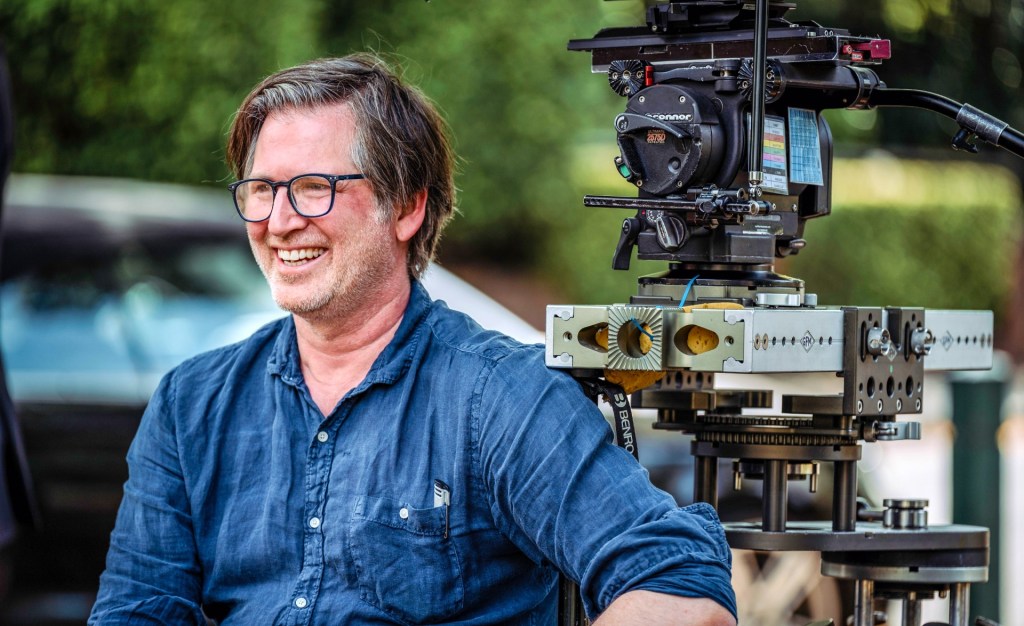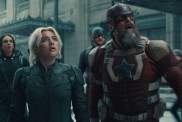Writer Adam Cooper is making his directorial debut with Sleeping Dogs, having written the likes of Allegiant, Tower Heist, and Exodus Gods and Kings over the years.
In Sleeping Dogs, Roy Freeman (Russell Crowe), an ex-homicide detective with a fractured memory, is forced to revisit a case he can’t remember. As a man’s life hangs in the balance on death row, Freeman must piece together the brutal evidence from a decade-old murder investigation, uncovering a sinister web of buried secrets and betrayals linking to his past. With only instincts to trust, he faces a chilling truth – sometimes, it’s best to let sleeping dogs lie.
ComingSoon’s Neil Bolt spoke to Adam Cooper about the film, shooting flashbacks, handling an Alzheimer’s plot, and the challenges of going from writer to director.
Neil Bolt: You’ve made a name for yourself as a writer, but this is your directorial debut. How was that shift for you? Was it daunting? An exciting challenge?
Adam Cooper: Uhh, yes, and yes. It was exhilarating. It was equal parts exciting and terrifying. It’s a new level of responsibility. It forces you to take what you imagined and threw on the page without thinking how you would achieve that. It forces you to think about how to achieve that in terms of time and money practically. The experience of doing that will definitely make me a better writer. You get to make the movie three times, essentially. When you write it, when you direct it, and when you get it into post-production. You get to tell the story three times.
That last part of post-production is the most reductive in terms of storytelling, and that’s really instructive for a writer to be in editorial because you realize the things you thought you needed when you were writing, that you’d definitely had to have when you were shooting, are what you find you don’t need in post-production. Knowing the difference, I suppose, is a challenge in the writing process, but it was a great experience. It was a challenging experience, but it was great.
Good to hear! With that in mind, being involved on multiple fronts with Sleeping Dogs, do you feel a bit more protective of it compared to writing projects?
Yeah, when you write something for hire, you have to give it up at a certain time and let someone else run their mental movie projector and reconstitute it in a way. Because I lived with this for a long time, from the optioning of the book to the writing of the script to the pre-production and the casting and the listing, production designing, and all of those elements, it certainly feels like more of a baby, and it’s harder to let it go out into the world. There’s a different kind of terror to it, you know?
When you write something, there’s a lot of people you can blame when it doesn’t go well, but when you’re writing, directing, and producing it, there’s more riding on it, I guess, but I’m very proud of it. Like a lot of things it is imperfect and certainly, in editorial, you notice the mistakes and remember what went down that day: why you didn’t get this or that. That’s kind of the nature of the best.

It must have been quite painful to see it in post-production.
I mean, yeah. Seeing the first assembly is always the worst. It’s kind of what you shot and told as it was written in the script because the editor follows that as a blueprint without any of the flourish or rejumbling of narrative or elimination of plot points and characters, you thought you had to have. But in many ways, it’s the funnest part of it.
So on that, I was curious, how do you approach a film that’s heavy on flashbacks? Do you still write and film it as a united piece with the present-day sections, or treat it almost like two separate films with interconnecting parts?
The latter! So, everything that took place in the present tense was shot with one kind of camera package and the flashbacks with another. Everything in Roy’s present tense narrative is shot with these Japanese lenses called Kowas, which were anamorphic lenses, and everything in the past on the Minolta lenses from the 70s that had been rehouse, and those were spherical lenses.
On a practical level, we would never be shooting past and present on the same day because it would get too confusing, and also be different for hair and makeup.
That’s fascinating to hear because I could feel that disticntion, especially in lens style; you can tell in the edges of the picture.
Yeah, the bend.
Yeah, that’s it! So, how much of a challenge was it to handle the subject of Alzheimer’s? I imagine there must be some fear and trepidation about how to implement it into the story in a respectful way?
Yeah, because we were doing a genre film, I think that we tried to use it more as a device than something we were digging into in a documentary kind of way. The stuff with DBS (Deep Brain Stimulation surgery) that Russell Crowe’s character has undergone is something they actually use for Alzheimer’s, but we took some license with that as it’s normally used for people with early onset than people who are that far gone. So, it’s used more as a narrative device and a character trait than it is used like it is in a movie like Still Alice, where it tackles the issue of Alzheimer’s and its broader effect on families. I think that because Russell’s character is so isolated and alone, it gave us a bit more license in how we handled that because his Alheimer’s doesn’t really effect anyone else but him.
So we were really using Alzheimer’s as a way to explore a man’s isolation and disconnection, and I think people with Alzheimer’s often feel increasingly alone in their experience, so we tried to lens the narrative that way: a man who feels alone in his experience.
Yes, I can see that. While the film is set in modern times, there’s more than a hint of early Noir to some of the performances and presentations. Was that just a side-effect of creating a story like this, or was it a deliberate blend?
It was a deliberate blend of things. We wanted the movie to feel grounded and real, but we really wanted to create a grim reality around Roy. There’s a duplicity to him; there’s the man he is in the past and the man he is in the present. That consequently led to a lighting scheme where there were a lot of shadows and trying to hide things. I think the lens flare and the shadow and the shafts of light, the framing, there are touchstones like Se7en, Shutter Island, Angel Heart, or Jacobs Ladder that I thought about in the making of this movie, so I didn’t want to lean too hard into the Noir elements, but there are definitely moments where it shows, for sure.
Sleeping Dogs is in theaters now.










